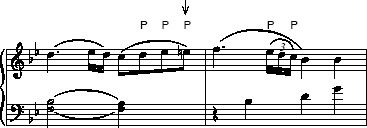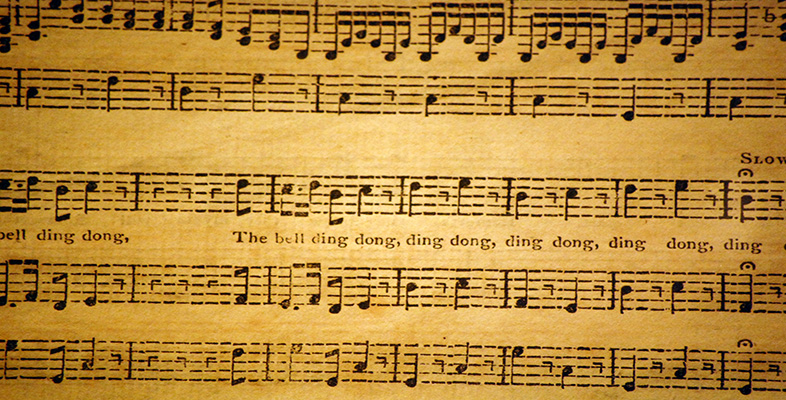3.3.1 Passing notes
Here, a dissonant pitch (P) is introduced between two different consonant pitches. The commonest situation is where the consonant notes are a third apart, and the dissonant passing note is placed between them to create a smooth line through the third. It is also possible to introduce more than one passing note to connect consonant pitches that are a fourth, a fifth, a sixth, or even an octave apart.
Example 8 is a part of an extract we have heard already, with the passing notes indicated by placing the symbol ‘P’ above each one, which is the usual way of analysing this form of dissonance.

Activity 7
Listen to this recording of Example 8.
Click to listen to recording.
Passing notes may be either diatonic or chromatic. The chromatic variety (such as the one in Example 8 indicated with an arrow as well as a ‘P’ symbol) is especially favoured by Mozart, and appears frequently in his music. Here, it has a delaying effect, momentarily increasing the tension at the approach to the F at the beginning of bar 5, which is the local goal of motion. In some contexts, chains of chromatic passing notes can achieve effects of great pathos, especially when descending through sixths or octaves (you may know the famous lament ‘When I am laid in earth’ from Purcell's Dido and Aeneas, or the moment in Don Giovanni when the Don is dragged down to hell).
